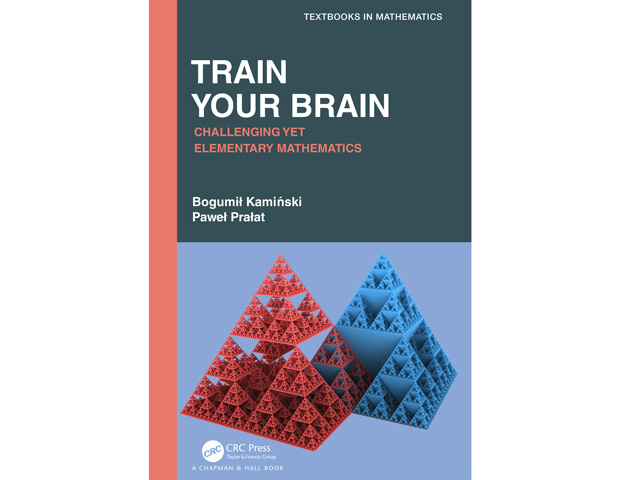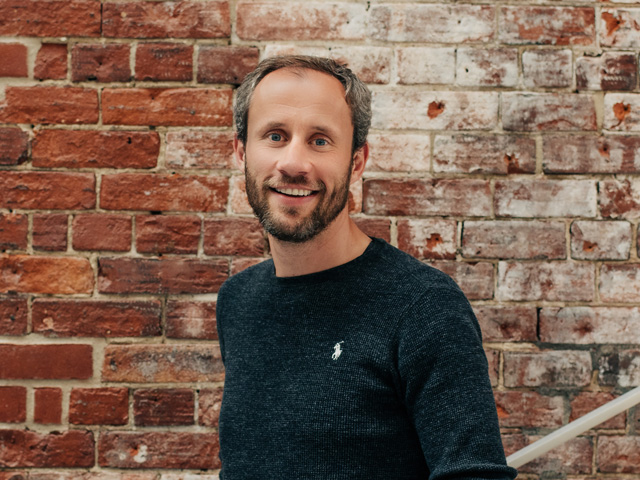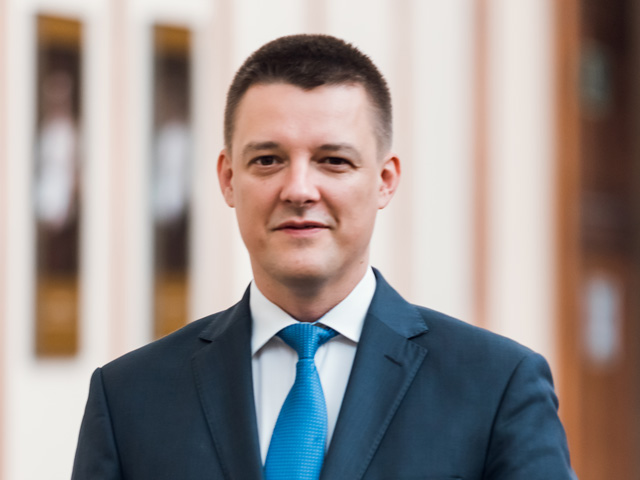Brain-boosting power of the real mathematics

Cultural perceptions have a way of flip flopping over time. When Ryerson mathematics professor Pawel Pralat grew up in Poland, kids with savvy in math were the popular ones — the heroes of the schoolyard.
Nowadays, Pralat is mostly greeted with blank stares and awkward silence when people find out he’s a math prof. But the tides of change are rising again.
The world’s largest, most competitive enterprises are increasingly prioritizing raw brain power over book knowledge — and their hiring practices reflect it. Robust problem solving and mathematical thinking are resurging in demand.
Pralat and Ryerson-affiliated data science professor from SGH Warsaw School of Economics Bogumil Kaminski (external link) have written Train Your Brain— Challenging Yet Elementary Mathematics. The new book helps diverse audiences sharpen their mental prowess — using no more than high school math.
During a recent interview, Pralat and Kaminski talk candidly about mainstream aversion to math, its true nature, computer use in math, and the competitive edge of mathematical thinking in the workplace.
Let’s address a major issue: Why do so many people ‘hate’ math?
Bogumil: Because most students never actually get exposed to true mathematics! They memorize basic calculations and formulas, such as finding the area of a triangle, but very little thinking is required from them. That’s not math at all, but arithmetic and applying algorithms.
Pawel: I agree. What they hate is not math; it’s dry, mechanical manipulations. Math is much more beautiful than they know. It’s the art of thinking and solving problems using logical reasoning — something to admire. People now are almost proud to say they aren’t good at math. But if it were taught as ‘logic’ instead, more people might like it. After all, nobody wants to admit they can’t think logically.
What motivated you to write the new book? Who is it for?
Pawel: It’s a collection of specially selected problems, mostly originating from Polish math competitions. They’re challenging, but require nothing beyond high school math. We explain everything from scratch that readers need to attack the problems: definitions and theorems, thought processes, detailed solutions, follow up exercises.
Bogumil: Pawel and I both participated in math competitions as students. We originally thought: let’s share the joy and help students on a similar path to prepare better. But once we started introducing basic concepts needed to solve the problems, we realized we could reach a much broader audience — not only high school and undergraduate students, but also people who work in related fields such as engineering and computer science, but who lack formal math training, or anyone who’s motivated by the challenge to improve their thinking and problem-solving.

Pawel Pralat
Surprisingly, you say students can even beat professors at the exercises?
Pawel: Yes, the book levels the playing field. Mathematicians and professors can even be intimidated because the problems don’t benchmark how much you know, but the quality of your thinking. “Elementary” does not mean easy or simple. The problems certainly require more than adding two numbers together, like 7 and 3. But bright students comfortable with the concept of formulas can often quickly find the solutions.
The famous Indian mathematician Ramanujan is a perfect example. He was poor, with no formal math training, but he left behind a few notebooks full of results that well-trained mathematicians are still learning from a century later.
What competitive edge does mathematical thinking give people at work?
Pawel: Math trains you to formulate a problem precisely. For instance “maximize a company’s profit” is a broad objective that’s usually not achievable in a single step. But strong math thinkers know how to break it down into smaller, solvable parts. After that, 90% of the job is done. Math also teaches you to contemplate statements carefully and avoid incorrect lines of reasoning. That’s important in many fields. Incidentally, Bill Gates once said: “Be nice to nerds. Chances are you’ll end up working for one.”
Bogumil: Yes, if you want to work for top companies, learning math and computers is the quickest route. People at the height of the business and technology world are using math and computation — in artificial intelligence, big data, simulations, etc. Math is not going away.

Bogumil Kaminski
The book shows the use of computers in math. That’s not cheating?
Bogumil: No. In the book, we use it firstly to verify answers where it may be too slow or error-prone to check by hand. Secondly, computers can act like a ‘black box’ to test hypothetical solutions— and if they’re wrong, we can quickly change course and waste no more time exploring them. These experiments and simulations can often provide insights or intuitions, and set us on the right path sooner.
One of the unique features of the new book is that we introduce readers to the Julia programming language. It’s quickly gaining popularity because unlike many older languages, it’s not only easy to write programs with, but also very fast. In the book, we show a few examples where we used Julia to solve certain problems.
Where can people get the book? And what’s next on your plate?
Pawel: Train Your Brain— Challenging Yet Elementary Mathematics will be available in early December from Amazon (external link) or Routledge (external link) . You can look inside the table of contents and full introduction on our book website.
Bogumil: Our next book is prepared in cooperation with François Théberge from the Tutte Institute for Mathematics and Computing, a Government of Canada research institute. It’s about analyzing complex networks, such as the Facebook or the Instagram social networks, using data mining techniques. It should be finished soon.